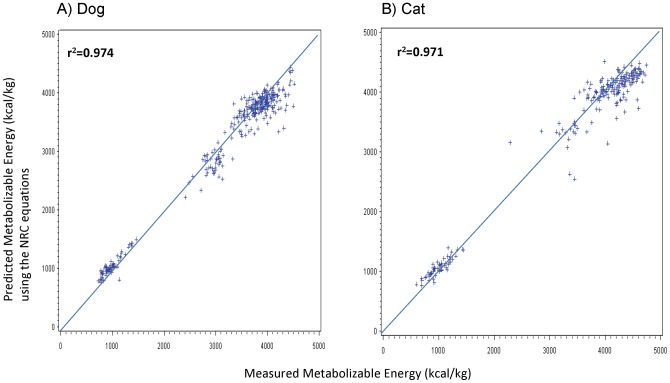Figure 2. Relationship between measured metabolizable energy (ME) concentrations (x-axis) and ME concentrations predicted using National Research Council (NRC) equations [2] (y-axis) for dog and pet foods.

Ideally, all points should be on the line x = y. A) Measured ME concentrations were determined from 331 total digestibility studies in dogs, of which 259 used dry dog foods and 72 used canned dog foods. The NRC equations for dogs first calculate gross energy (GE) using the equation GE = 5.7× g protein +9.4× g fat +4.1× (g NFE + g fiber). Energy digestibility coefficients are then calculated for dogs as (91.2–1.43× percentage crude fiber in DM). These digestibility coefficients then allow calculation of digestible energy (DE) in dogs as DE = GE × percentage energy digestibility/100 and, subsequent calculation of ME as ME = DE – (1.04× g protein). B) Measured ME concentrations were determined from 227 total digestibility studies in cats, of which 173 used dry cat foods and 54 used canned cat foods. The NRC equations for cats first calculate GE using the equation GE = 5.7× g protein +9.4× g fat +4.1× (g NFE + g fiber). Energy digestibility coefficients are then calculated for cats as (87.9–0.88× percentage crude fiber in DM). These digestibility coefficients then allow calculation of DE in cats as DE = GE × percentage energy digestibility/100 and, subsequent calculation of ME as ME = DE – (0.77× g protein).
